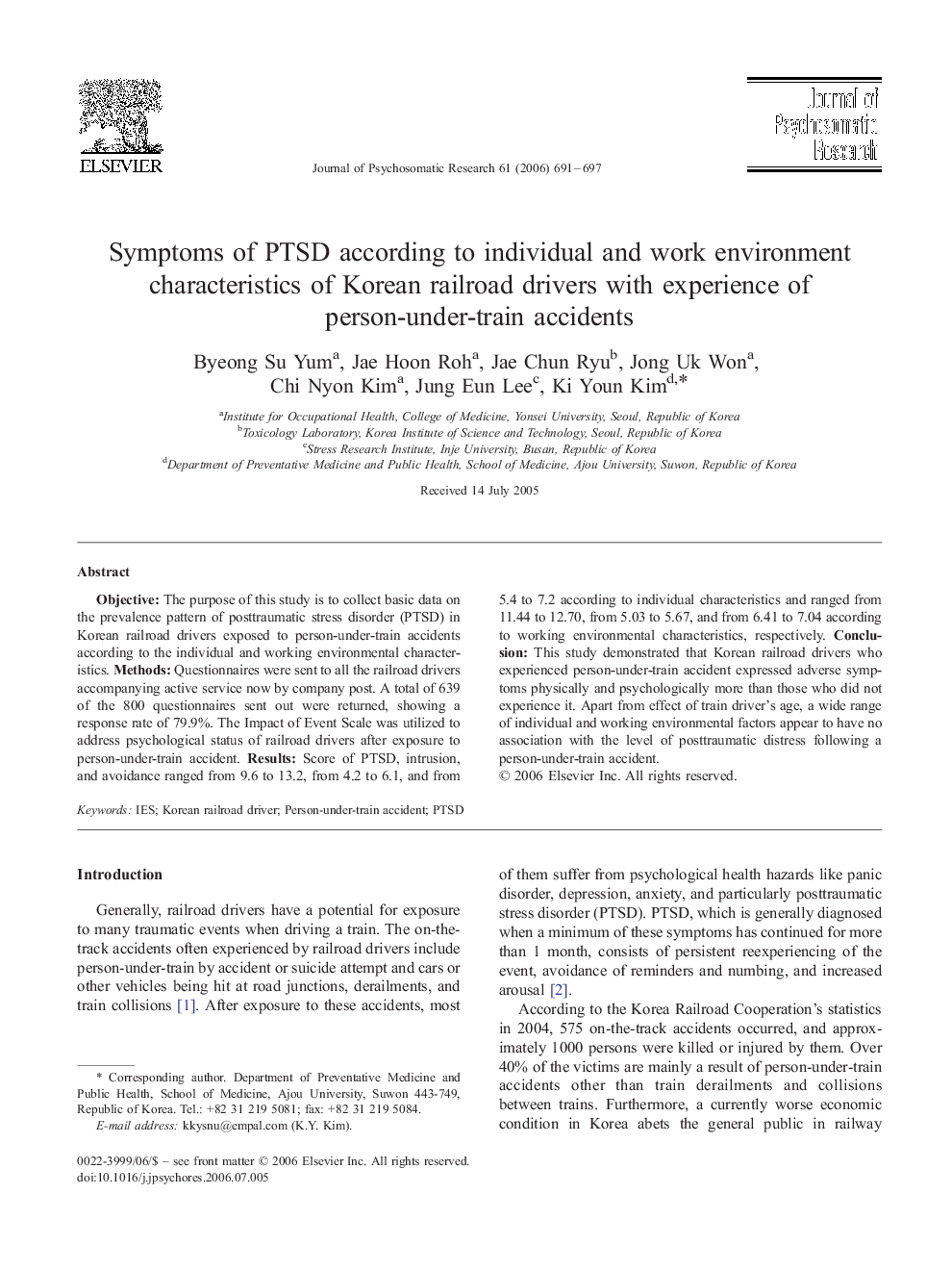| کد مقاله | کد نشریه | سال انتشار | مقاله انگلیسی | نسخه تمام متن |
|---|---|---|---|---|
| 951195 | 926876 | 2006 | 7 صفحه PDF | دانلود رایگان |

ObjectiveThe purpose of this study is to collect basic data on the prevalence pattern of posttraumatic stress disorder (PTSD) in Korean railroad drivers exposed to person-under-train accidents according to the individual and working environmental characteristics.MethodsQuestionnaires were sent to all the railroad drivers accompanying active service now by company post. A total of 639 of the 800 questionnaires sent out were returned, showing a response rate of 79.9%. The Impact of Event Scale was utilized to address psychological status of railroad drivers after exposure to person-under-train accident.ResultsScore of PTSD, intrusion, and avoidance ranged from 9.6 to 13.2, from 4.2 to 6.1, and from 5.4 to 7.2 according to individual characteristics and ranged from 11.44 to 12.70, from 5.03 to 5.67, and from 6.41 to 7.04 according to working environmental characteristics, respectively.ConclusionThis study demonstrated that Korean railroad drivers who experienced person-under-train accident expressed adverse symptoms physically and psychologically more than those who did not experience it. Apart from effect of train driver's age, a wide range of individual and working environmental factors appear to have no association with the level of posttraumatic distress following a person-under-train accident.
Journal: Journal of Psychosomatic Research - Volume 61, Issue 5, November 2006, Pages 691–697